China is expanding its influence in space and is usually ranked among the worst offenders when it comes to producing space debris. Earlier this month, China launched a rocket carrying Chang’e 4, a lunar lander and rover spacecraft, as part of the second phase of the Chinese Lunar Exploration Programme. The first phase of the programme, Chang'e 1, was launched in 2007 with debris impacting the surface of the Moon in 2009
Number of China's trackable objects in orbit
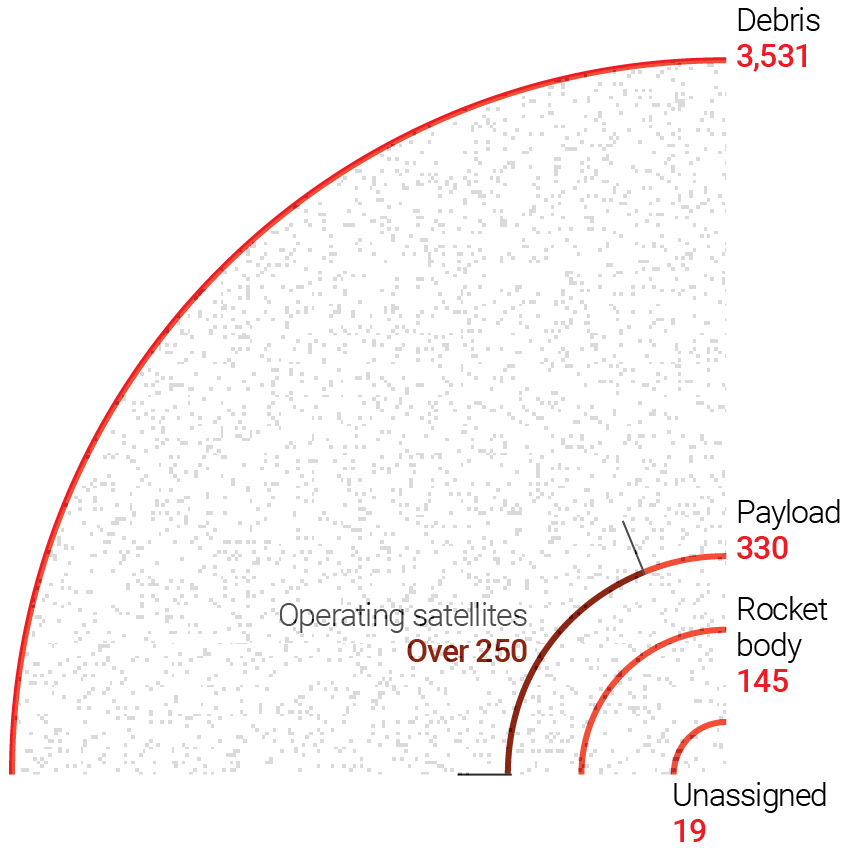
Most space debris comes from break-up events caused by explosions and collisions. In the 1960s several spacecraft were made to intentionally self-destruct while others were destroyed through anti-satellite weapons tests
It is estimated that more than 500 break-ups have resulted in fragmentation. The two worst events resulting in the growth of space debris were the intentional destruction of a Chinese satellite, and the accidental collision of two satellites
On January 11, 2007, China tests an anti-satellite missile against the defunct Fengyun-IC weather satellite
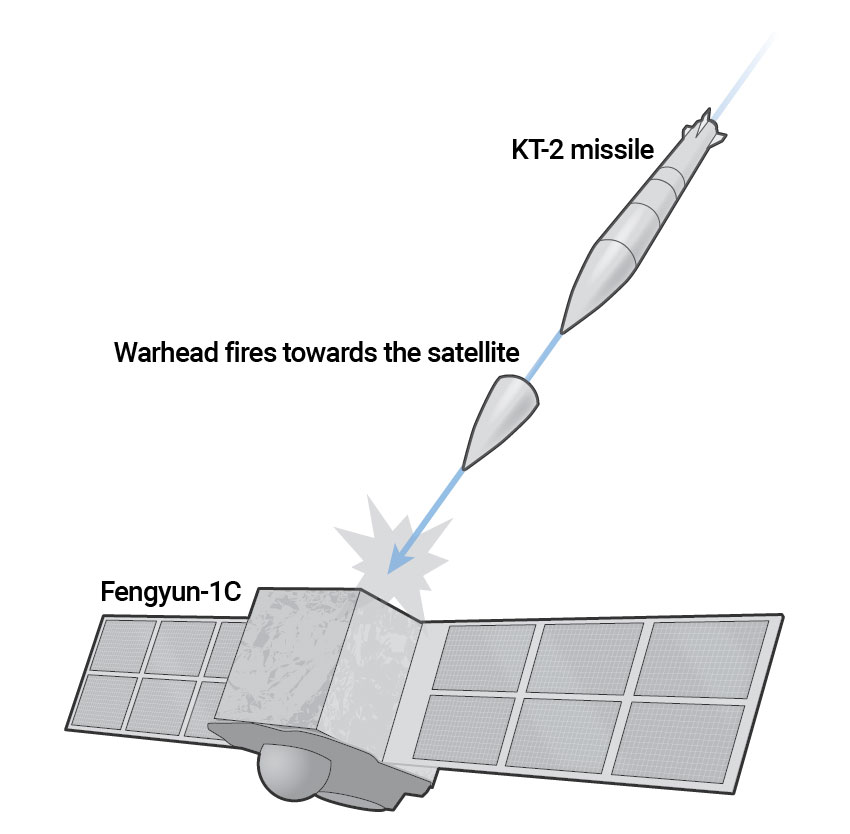 The Fengyun weather satellites are first deployed in the late 1980s. Fengyun-IC is launched on May 10, 1999, into a polar, sun-synchronous low Earth orbit
The Fengyun weather satellites are first deployed in the late 1980s. Fengyun-IC is launched on May 10, 1999, into a polar, sun-synchronous low Earth orbit
The destruction of Fengyun-IC creates an estimated 300,000 objects 1cm or larger – big enough to be fatal to a satellite mission. More than 3,000 pieces of debris are at least 10cm long – large enough to be tracked. The debris cloud generated is the largest ever recorded
The first accidental collision of two satellites occurs between America’s Iridium 33 and Russia’s Cosmos 2251, on February 10, 2009
Iridium 33 is a communications satellite launched into low Earth orbit by the US on September 14, 1997
 Cosmos 2251 is a Russian communications satellite launched into low Earth orbit on June 16, 1993
Cosmos 2251 is a Russian communications satellite launched into low Earth orbit on June 16, 1993
The collision in 2009 adds more than 2,000 fragments to the catalogue of tracked objects
The trash situation in space is getting worse and risks making space off-limits for future generations, according to the European Space Agency's (ESA) chief space debris expert
When a piece of space junk is created, it will end up either slowing down to fall back toward Earth, burning up in the atmosphere or it will crash into another piece of space trash, producing more, smaller projectiles with orbits of their own
Number of trackable objects in orbit by category (year)
As of November 2018, space objects are categorised according to the launch date

The 2007 destruction of China’s Fengyun-IC, a satellite launched in 1999, adds over 3,000 fragments to the catalogue of tracked objects


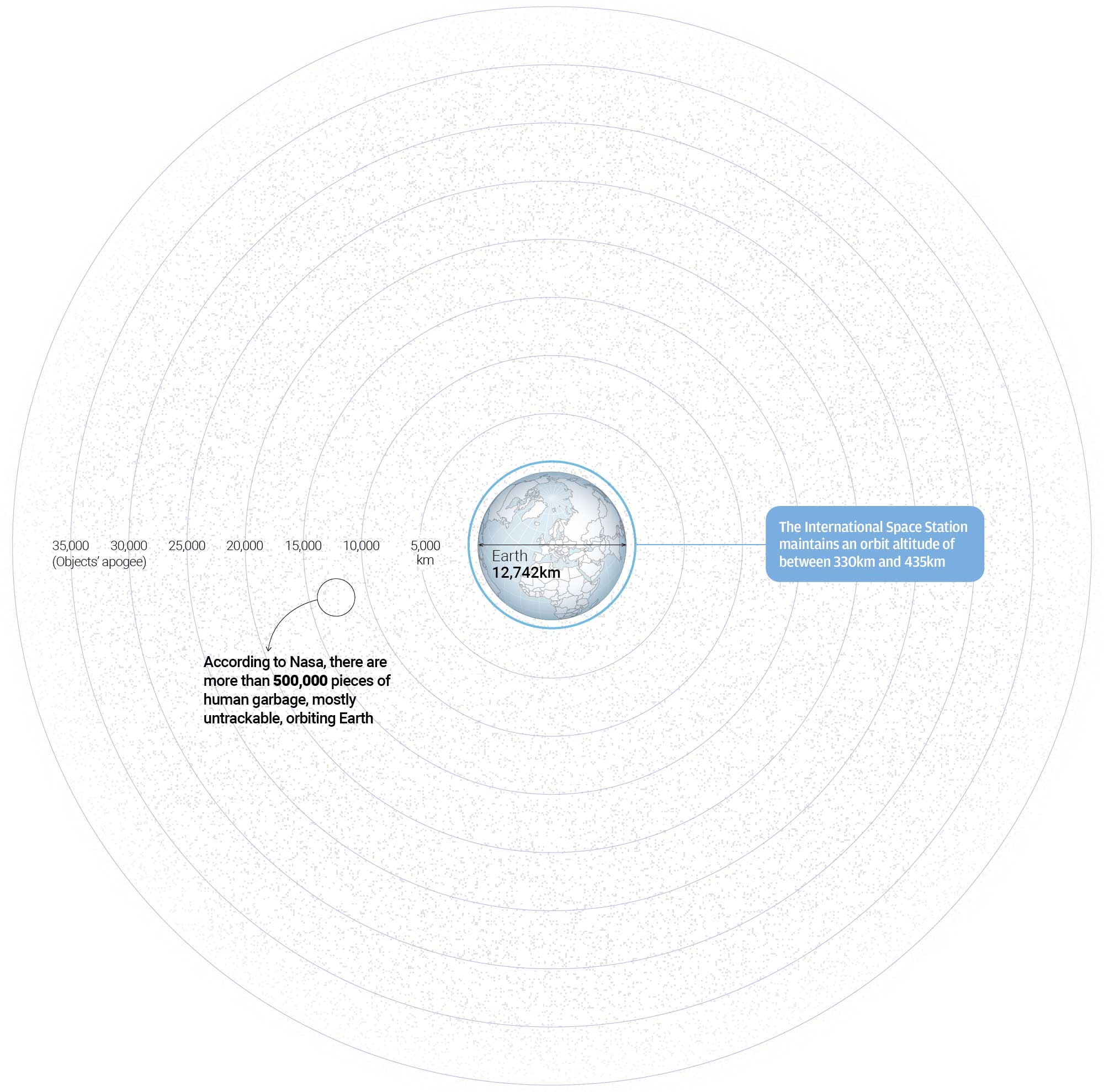
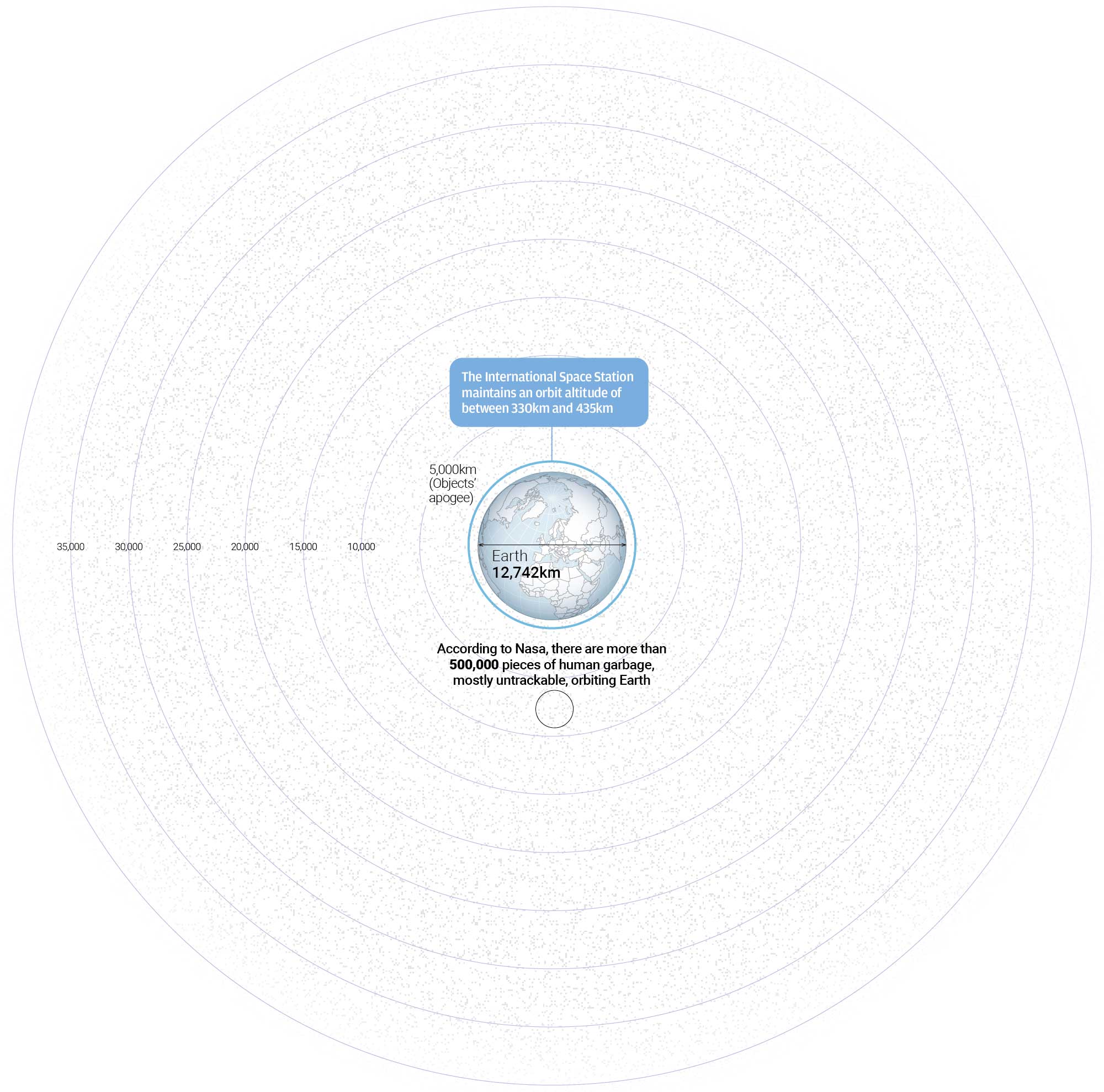
 The Fengyun weather satellites are first deployed in the late 1980s. Fengyun-IC is launched on May 10, 1999, into a polar, sun-synchronous low Earth orbit
The Fengyun weather satellites are first deployed in the late 1980s. Fengyun-IC is launched on May 10, 1999, into a polar, sun-synchronous low Earth orbit
 Cosmos 2251 is a Russian communications satellite launched into low Earth orbit on June 16, 1993
Cosmos 2251 is a Russian communications satellite launched into low Earth orbit on June 16, 1993


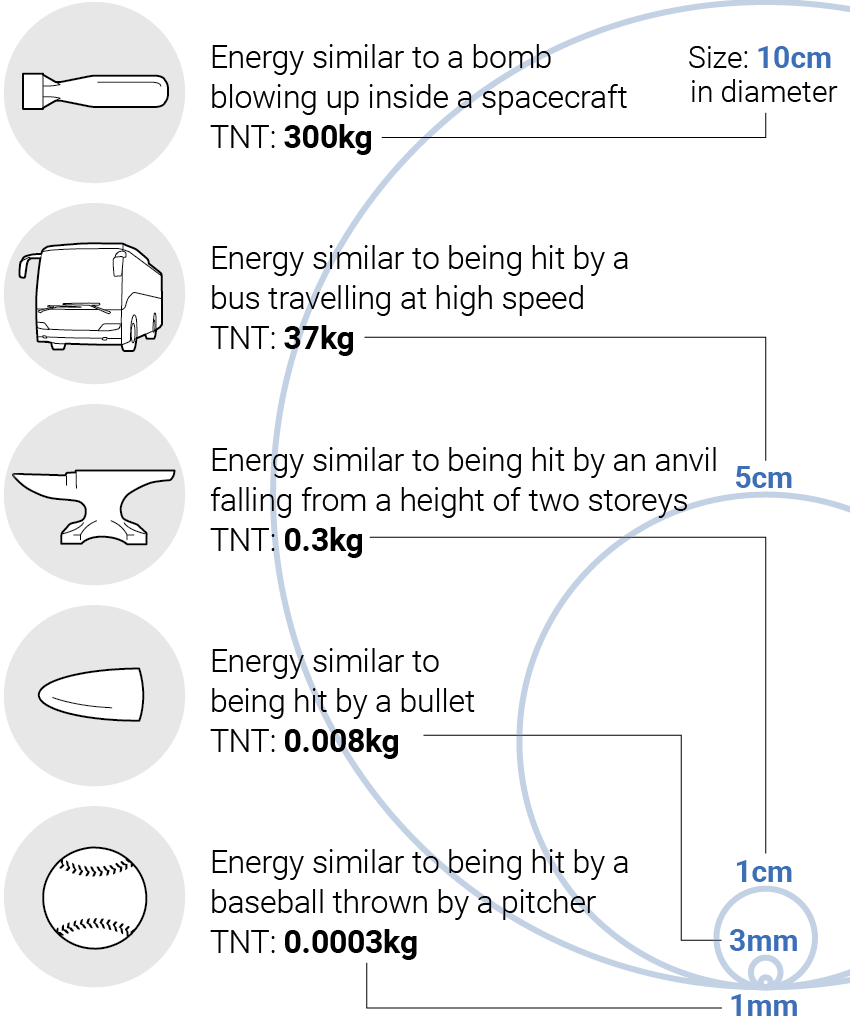




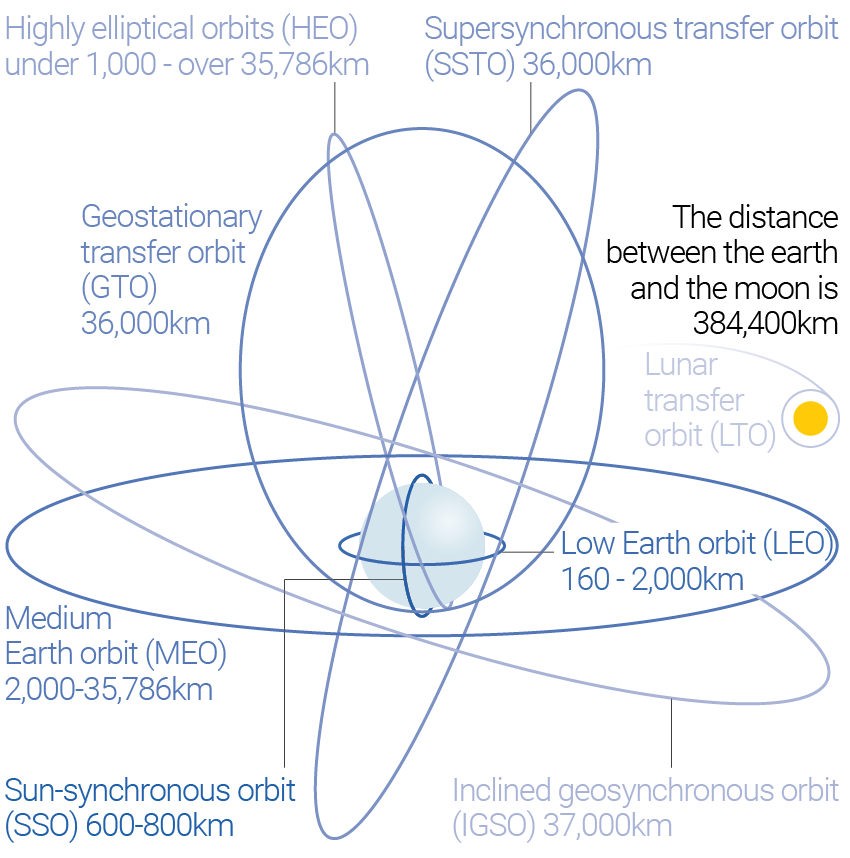
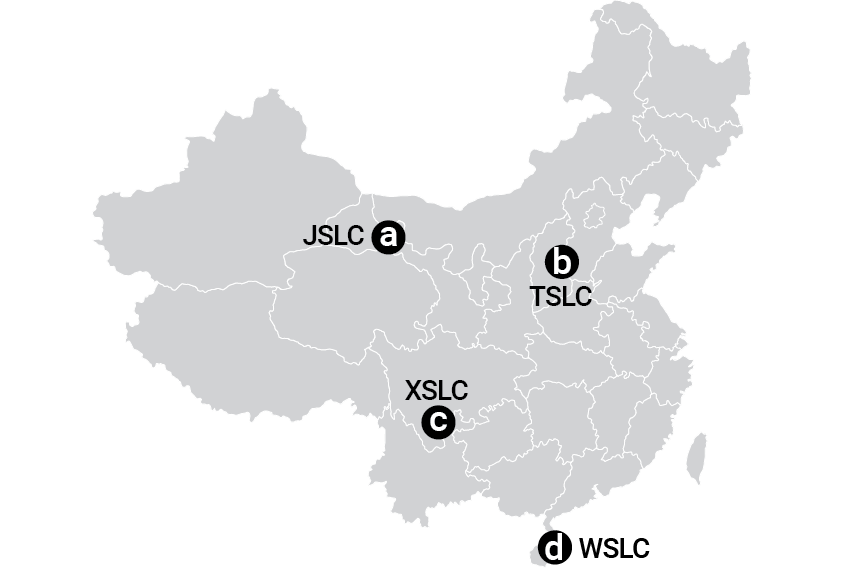 a. Jiuquan Satellite Launch Centre
a. Jiuquan Satellite Launch Centre